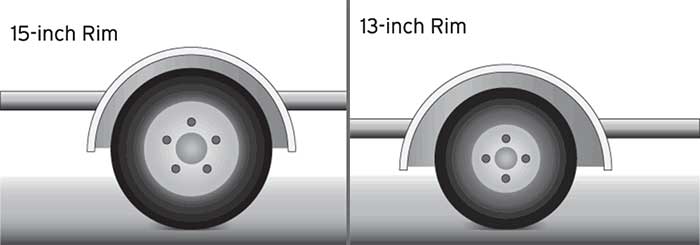Advertisement
Trailerable boats are like buildings: They need a good foundation. Here's what to look for.
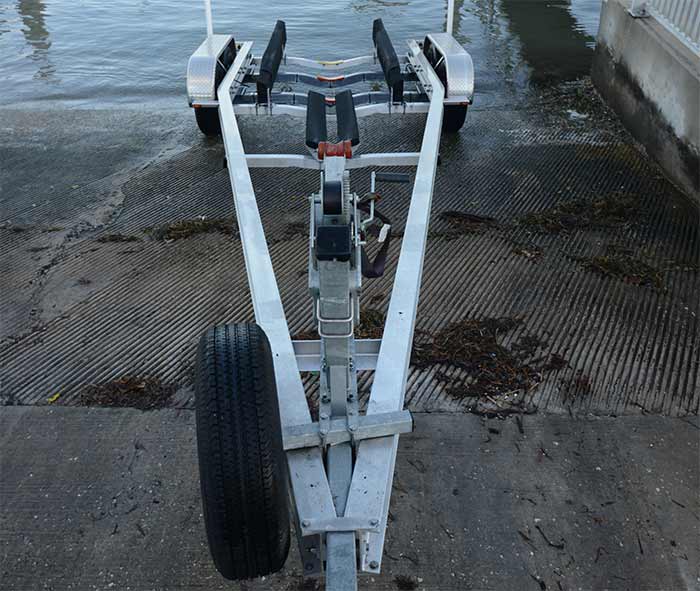
It's best to inspect a trailer without the boat on it when possible.
Depending on how you plan to use the boat, a trailer can make or break the deal for you. Before you dive in and purchase this new-to-you boat, be sure to give the trailer a good examination. A trailer that's not roadworthy could cost you hundreds of dollars or more in repairs. Also, in order to complete the licensing and registration process, your state may require an official trailer inspection.
Visit your state motor-vehicle administration's website to learn the process for getting your trailer tagged and whether an official inspection is required. State requirements can differ, so do your research to see what's necessary. Visit nhtsa.gov to learn federal requirements and your state's department of motor vehicles website for state-specific information.
Even if your state doesn't require an inspection, you'll still want to make an informed purchase decision. Start by walking around the trailer and taking note of the presence and condition of the following items.
Capacity Plate & VIN
A trailer's capacity plate spells out the trailer's designed maximum weight and identifies the tires with which it was equipped when new. In addition, a vehicle identification number (VIN) is typically etched, mounted, or affixed to the trailer. Newer trailers often display the VIN on the capacity plate or decal. On an older trailer, this decal can easily be damaged or just plain missing, which can create registration problems. Some states allow the police or DMV to reissue a VIN plate at the owner's request. If the trailer you're considering is missing this info, do your homework on how much of a hassle it's going to be to get it rectified.

Dual axles provide some redundancy and can prevent a disaster in the case of a blowout.
Axles and Suspension
Not surprisingly, larger axles can carry more weight; if you suspect the axles have been replaced or look undersized, compare the size of the axle cross-section with what's listed on the trailer's capacity plate (see chart). For example, a dual-axle trailer rated to carry 3,400 pounds might have a pair of 2.375-inch axles, each good for 2,200 pounds. Remember, you have to subtract the weight of the trailer from the gross capacity.
| Typical Rating | Axle Tube OD Size (spring axle only) |
|---|---|
| 2,000-2,200 lbs | 1.75" |
| 3,500 lb | 2.375" |
| 5,200-7,000 lbs | 3.00" |
Examine welds and connections and see that the suspension is creating at least four inches of ground clearance at the lowest point of your trailer. Leaf springs rust long before the frame and require replacement; this is often a sign of age rather than neglect.
Frame and Fenders
Fenders shouldn't be loose, rusted, or torn and should cover the entire tread width of each tire. Because fenders are often used as a step, make sure they're still up to the task. Inspect the frame for rust and staining. Anything that strikes you as excessive should be investigated further.
Tires and Bearings
Dry rot gets most trailer tires long before the treads wear out. A dry-rotted tire or one with bulges requires replacement. Store trailers indoors to keep UV light from deteriorating the sidewalls. Check the capacity plate on the trailer to make sure the tires that are fitted are the appropriate ones. Wheel bearings shouldn't exhibit wobble or excessive play. Visible grease on the rim can indicate a problem, though a bearing replacement won't break the bank.
Tip
Trailer Wiring
The connection between the trailer and tow vehicle should be made through a quick-disconnect plug or connector. All wiring should be properly insulated and secured. Look for wire supports at least every 18 inches. Wiring at bends, flex points, and near moving parts should be inspected for chafing or scorch marks. It's not uncommon for lights to burn out or short. These are nice to find in working order, but again, a $69 kit and a few hours of DIY-effort make it right.

Check that the connector is compatible with your tow vehicle or make sure to have the necessary adaptor before you tow the rig home.
Lights & Reflectors
By law, the array, color, and number of trailer lights required are based on trailer dimensions. A safe assumption is that if your trailer is equipped with lights, you want them in working order. At a minimum, each trailer should have working brake lights and turn signals. In addition, most boat trailers must display red side-marker lamps at the rear and amber side-marker lamps or reflectors toward the front. For trailers wider than 80 inches, three red identification lamps are required on the rear crossmember.
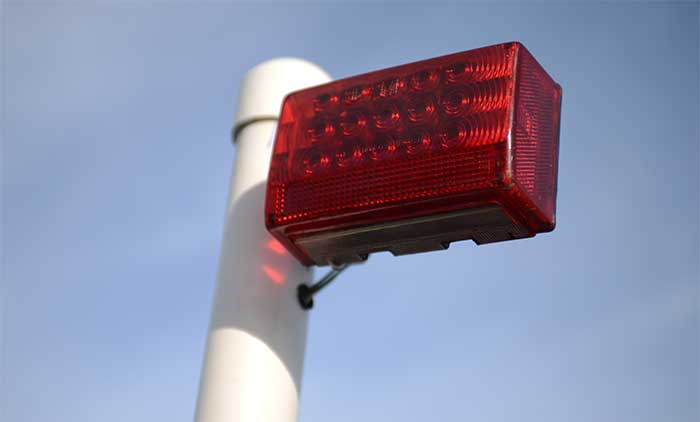
Extra brake lights mounted up high like this one increase visibility.
Brakes
If your trailer is rated to carry 3,000 pounds or more, your state will specify the type and location of brakes required. While that's the standard in 35 states, some states want brakes on trailers as light as 1,500 pounds, while others let you coast up to 4,500 pounds, although that's not recommended. If you're considering an out-of-state boat-and-trailer package, this can be a big deal, as it can be expensive and difficult to retrofit brakes on additional axles. Some states, such as Florida, require brakes on each axle. For others, you may be required to have brakes on just one axle. You may also be required to have an emergency breakaway device to activate the trailer brakes should the trailer separate from the tow vehicle. The short version is this: If the trailer has brakes, inspect them carefully and inquire about when they were last serviced.
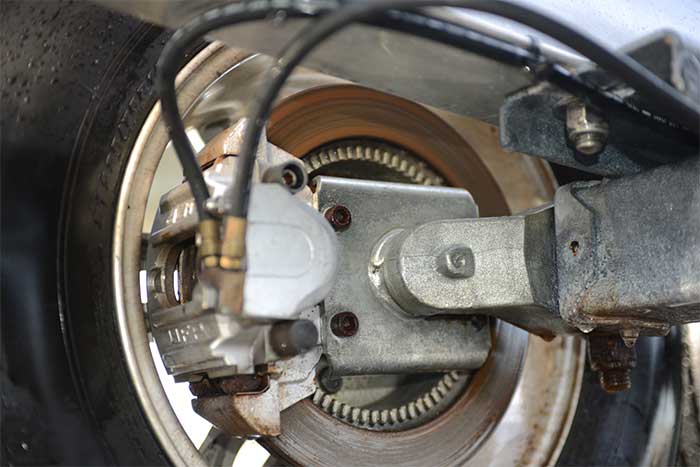
Brakes are required on most trailers rated to carry more than 3,000 pounds.
Trailer Coupler
The coupler should have markings on the tongue indicating the approved ball size and its capacity, which should match the information on the capacity plate. Be certain you have an adequately rated receiver and hitch and a properly sized ball on your tow vehicle for towing the total package. Surge brakes are common on trailers weighing more than 3,000 pounds. Electric or electric-over-hydraulic actuators are more common on high-capacity trailers, but if you see anything that looks unfamiliar, ask about the setup and make sure it's compatible with your tow vehicle.
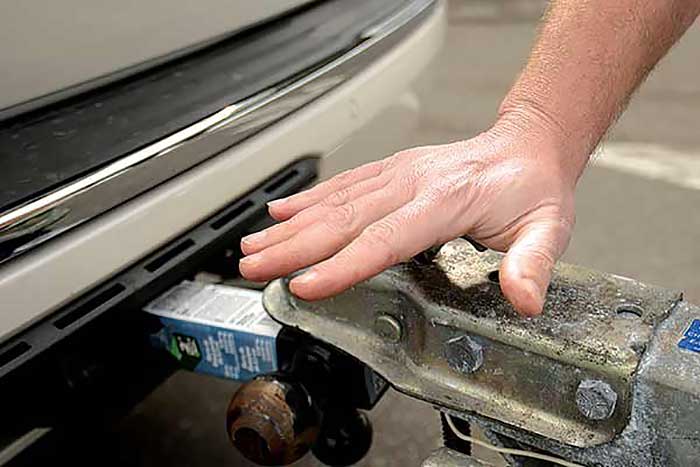
Photo: Jason Arnold
Safety Chains
Check the safety chains to make sure, in the case of an accidental disconnect, that they're the right length to keep the trailer coupler from dragging on the road. A safety pin or a padlock that secures through the coupler latch is a great idea and may also be required while towing.

Photo: Jason Arnold
Ownership Docs
Be sure the seller is in possession of the proper ownership documents for both the boat and trailer. Compare the VIN on the documents to the one on the trailer. If the trailer is missing the VIN, it can't be read, or it doesn't match the ownership paperwork you are presented, you may run into an issue at the DMV and be required to apply for a replacement. If the seller has a title for the trailer, be sure you get that, too. Some states don't title trailers at all. Also ask the seller to provide you with a bill of sale. In some cases, you may need a separate bill of sale for the trailer. If any of these items are missing, you'll spend time convincing state agencies of ownership, which will cause a delay in getting your trailer licensed.
Why Tire Diameter Matters
Because they travel a greater distance per revolution, larger trailer tires wear less than smaller ones. After an hour at highway speeds, the smaller tire will have spun an extra 10,000 revolutions, which means more heat, bearing wear, and chance of problems.

